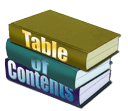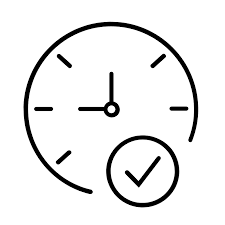
6.1 Within the text of the coursework provided you heard many ideas that either changed or reinforced those you already had about yourself. A Course of Love is a teaching text and the goal of its teaching was stated and restated many times so that you would not forget the purpose of the learning you were participating in. Eventually your learning reached an end point as the learning goal of this Course was met, and this you were told as well. I say this to remind you that the time of “teaching” like the time of “learning” had its place as well as its methods.
6.2 One of the methods employed by your teacher within the text of your coursework was that of comparison, a method that will be used less and less as the time of learning passes. The thought reversal of which we recently spoke is why I bring this up. During your time of learning, I used a method of comparison—I compared the real to the unreal, the false to the true, fear to love—in order to point out the insanity of your perception and the perfect sanity of the truth. For some of you the repetition of the properties of the false that aided your learning may now work as a detriment to your acceptance as you cling to ideas concerning false representation rather than let them go in order to embrace true representation. In the time of learning, you were so entrenched in your false beliefs that their insanity needed to be stated and stated again. But as we enter this new time of elevated form, these same ideas—ideas that many of you attached to form rather than to your perception of form—must be rejected.
6.3 This is what I have already spoken of and speak of again as a revisioning of what you believe imprisons you.
6.4 While the false representation of the body as the self was almost as detrimental to your learning as the false representation of the ego as the self, the body, given your choice to return to who you truly are while still in form, continues, while the ego, of course, does not. Your belief in the non-existence of the ego is now total and has brought a freedom and a liberation in which you rejoice. Your true Self is beginning to reveal itself to you in ways of which you will become increasingly aware. As you identify more intimately with the Self you truly are, the self of form is likely to grow more and more foreign to you and less and less comfortable. Thus what is required now is a new way of envisioning the body and its service to you.
6.5 Like all that was created for the time of learning, the body was the perfect learning device. Seeing it as such assisted us in bringing about the end of the time of learning. But now your body—your form—must be seen in a new way. It is thus with new ideas about the body that we will begin the final thought reversal that will allow you to live in form as who you truly are.
6.6 The body, as all else you see among the living, is, in fact, living. It exists as living form. And so we begin with a distinction between what exists as living form, and what exists as inanimate or non-living form. While you might think this is an easily drawn distinction—and it is—it is not perhaps as you have previously seen it, for everything that exists in form is of the same Source. Even those things you have made you have not made from nothing. There is not one thing that you have made that does not exist as some variation of what was originally created. Because, and this cannot be repeated enough, creation begins with what is. And so even the creations you have made are only distinct from what was originally created in your perception of what they are or what you have determined their use to be. There is thus truth, or what we might call the seeds of the truly real, or the energy of creation, in everything that exists in form.
6.7 It is your perception of the forms around you as non-living forms that cause them to have rigidity and a particular meaning. But they still are real, even if they are not as they appear to be to the body’s eyes.
6.8 What is not real are the things that you have made to represent what is real since you didn’t understand what it was you were making things to represent. These are the systems we have already spoken of: Systems of justice, systems of government, systems of corporations, the systems of economics and science—the systems—in short, of what you think governs you.
6.9 In the Bible there were many stories about miracles, both before and after the time in which I lived. If you were to pose to a scientist whether or not these miracles were possible, they would tell you of all the “laws” of science that would be opposed to them occurring. You would be told that if the sun had “stood still” galactic catastrophes would have resulted, that there are reasons Noah’s flood could not have occurred as described, or that it would have been impossible to repopulate the earth afterwards even if it had taken place as described.
6.10 What these laws of science do not take into account are the laws of God. Although science is beginning to see much as it truly is, scientists still look for natural laws that govern what is in an “if this, then that” world.
6.11 This same kind of attitude still governs your ideas about the body and the systems of the world in which you exist. If you are no longer living in an “if this, then that” world, then the same laws will naturally not apply. You developed an “if this, then that” world because it was the easiest way in which to learn. It was the easiest way in which to learn because it seemed to provide proof. Yet if science teaches anything, it teaches that what is proven can be disproved—and often is. Thus the prayer of the Native Americans who thank the sun for rising each day is a prayer that acknowledges that the sun may not rise. This is not a doomsday attitude, but an attitude that accepts that scientific or natural law and the law of spirit are not the same.
6.12 There are many stories in many cultures that celebrate and bear witness to the happenings that reveal that the laws of spirit and the laws of man coexist. Yes, there are natural laws, but these “natural” laws are not the sets of facts you have defined them to be, but rather a staggering series of relationships, relationships without end, relationships that exist in harmony and cooperation. This is a harmony and cooperation that might one day extend to the sun and a demonstration that the sun need not rise—or perhaps need not set—and the earth would still be safely spinning in its orbit.
6.13 Now if this were to happen, scientists would quickly determine the existence of a natural law that allowed this event to happen. It would require the re-working of many previously known “scientific facts,” but this would not prevent them from discovering new “scientific facts.” I mean no disrespect to scientists and bless them for their desire to find the “truth,” as you should bless them for the certainty they have given you in an uncertain world. Even if it has been a false certainty, it served a great purpose in the time of learning. Discovery has been a grand facilitator of the human spirit’s quest for the truth and is part of what brought you, finally, to the quest to know your Self.
6.14 I am calling all of this to mind in order to begin our discussion concerning the suspension of belief. If you continue into the new with your old ideas about your body, the old body will be what you carry into the new with you. So let us begin with a suspension of belief in what you think you know about the body, in what science would tell you about the body, in what you have experienced as a body—a suspension of belief that comes in the same spirit as that of the Native American who knows that the sun may rise and may set, but also knows that it may not. I am speaking of a spirit that is open to the discovery of something new and “unbelievable” and even “scientifically impossible,” as well as to the creation of something new. For in this time of revelation, discovery is the new divine pattern that will replace the “thought” systems we have spoken of. To discover is simply to find out what you did not previously know.
6.15 Creation of the new will be predicated on the discovery of what you did not previously know. This will not happen if you cling to “known” truths. Revelation cannot come to those who are so “certain” of what is that they cannot allow for the new to be revealed. Your certainty about what is is a false certainty, a learned certainty based on the fear that caused you to order the world according to a set of facts and rules.
6.16 Be jubilant rather than hesitant about the time of discovery that is before you. Calling what you think you know into question is not a call to return to uncertainty, but a call to allow real certainty to come.
6.17 If you think of the “old” as a world in which an attitude of “if this, then that” ruled, and the “new” as a world in which giving and receiving are one, you will begin to see the enormity of the thought reversal that now awaits your acceptance. As I said earlier, we begin by applying this new attitude to the body.
6.18 You have been taught that if you take care of the body in certain ways, then good health will result. You have been taught that if your body expends energy, then it will need the refueling provided by food or rest. The list could be endless, but these examples will suffice. These modes of behavior concerning the body were given to teach and to represent. What you have done is turn them into implacable rules you call natural laws. When these natural laws have been shown at times to not apply, you consider these instances flukes or miracles.
6.19 When a person who has exhibited healthy habits get sick, you think it is unfair. When a person who has exhibited unhealthy habits gets sick, you think, even if you would not say, that they “did it to themselves” or that they could have prevented it by abstaining from the unhealthy habits. You might look now at these two attitudes and see that they are somewhat silly, but still you would cling to them because you would believe the person of healthy habits has a greater chance of not getting sick than the person of unhealthy habits. Again we could go into countless examples of this type of thinking, but the examples matter not except to make you see that these attitudes are not ruled by certainty, but by a mere idea of bettering the odds against what fate may offer.
6.20 What fate may offer is itself an attitude that puts life at the risk and whim of an external force that has no reality except in your imagination. What is this thing called fate? Like all the systems you believe in, it is a system too, an internal idea given a name, externalized, and blamed for all that you do not understand, all that cannot be made to make sense, all that seems unfair and beyond your control.
6.21 When you remember that we have left blaming behind, you will see that belief in fate is just as systematic and in need of being left behind as is belief that illness can be blamed on certain habits. This may not be the type of blaming you see as easily as that of blaming a friend for your hurt feelings, or blaming the past for the present. And yet, what ridding your mind of ideas of placing blame does, is take it one step away from the thinking of the “if this, then that” thought system we are leaving behind. As a non-learning being you are now called to accept that you no longer need this type of learning device and to realize that it will no longer serve you.
6.22 Let us return now to the beginning and start with the body as a given. It is what it is in terms of flesh and bone, and it is also the form that is now serving to represent the truth of who you are. How might this change the “laws” of the body, the laws you gave the body in the time of learning, knowing not what the design of the body represented? What might the bodily design now represent?
6.23 The first example of the body we presented newly was that of the perfect design of the joining provided through sexual intercourse—a design given to lead the way to desire for oneness and completion.
6.24 We have talked of but one replacement for the pattern of learning—the pattern of acceptance. What might the body be called to accept? This is an easy answer, as you have already called upon the body to accept the indwelling of Christ. You have replaced the personal self, the self of learning, with the true Self. You have accepted your true identity. How could the body now be the same as it once was?
6.25 The body was, in the time of learning, representative of a learning being. The ego, however, narrowed your ideas of what the body was here to learn to ideas of survival. You thus learned to survive rather than to live. You increased the life span of the human being, but you increased not its capacity for true living or true learning. And with the extended life span came extended reasons for fear, and a physical form that you came to believe needed greater and greater resources to maintain.
6.26 The body is now the embodiment of the true Self, the embodiment of love, the embodiment of divinity. Its existence is given as it was always given. But now the very nature of its existence has changed. I say changed here because you may remember that change occurs in time. Outside of time and form your Self has always existed in the perfect harmony in which it was created. Now that your Self has joined the elevated Self of form, you exist together both in time and outside of time. Remember, the elevated Self of form will never be all that you are. This does not imply however, that there are portions of your Self missing from this new experience in form you now enter into, but that the elevated Self of form is now able to join with the Self in the unity of shared consciousness. You are whole once again and your form will merely represent one aspect of your wholeness in the field of time.
6.27 The self of form, as form, could never truly experience the All of Everything that is the natural state of the formless. But the true Self cannot cease to experience its natural state, the state of Christ-consciousness, sharing in unity, the All of Everything. So these two states, the state of form and the state of unity, are both in existence right now. In the state of unity, your true Self is fully aware of the elevated Self of form and is fully participating in its experiences and feelings. The elevated Self of form, however, being a form that still exists in time, must realize the consciousness of the true Self in time. What this means is that the elevated Self of form may still need “time” to come to know the changes that only occur in “time” although they are already accomplished in unity. This is why we have spoken of miracles and of the collapse of time the miracle is capable of providing. We have redefined the miracle as the art of thought, or the continual act of prayer that sustains the unity of Christ-consciousness.
6.28 Form and time go together. Yet you have been told time is a measurement of learning. If you are no longer a learning being, for what is time needed? Time is needed now only for the transformation of the self from a learning being to a being that can accept the shared consciousness of unity and begin to discover what this means.


Enter your search and press enter to begin.

Thank you for supporting the Library!!
The recording has finished and data collected. Please fill the form below and press 'Submit' to send us the timing data you captured.
Timing data exists for this session. Please confirm that you want to modify the existing timing.

Select recipients from the dropdown list and/or enter email addresses in the field below.